This is the most important and biggest Tet (Lunar New Year) of the year for the Muong community in Hoa Binh .
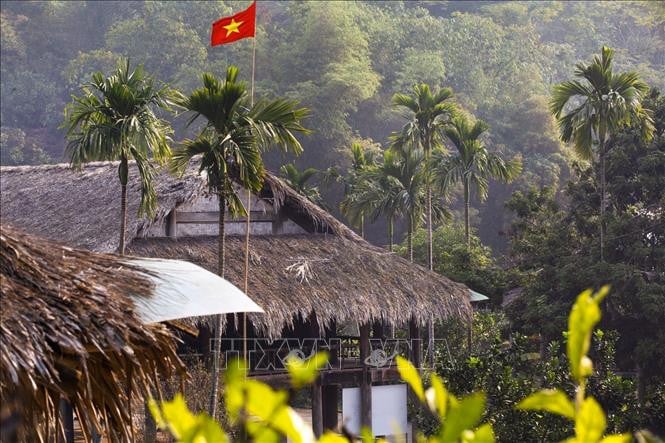
The beauty of New Year's customs
According to traditional beliefs, the Muong people in the four major Muong regions of Hoa Binh province, including Muong Bi (Tan Lac), Muong Vang (Lac Son), Muong Thang (Cao Phong), and Muong Dong (Kim Boi), begin celebrating the Lunar New Year (the Muong people call it the New Year) from the 27th day of the 12th lunar month of the old year until the end of the 7th day of the 1st lunar month of the new year.
From early morning on the 27th day of the 12th lunar month, the Muong people (in Hoa Binh province) cut bamboo or young bamboo to strip and split into strips for wrapping banh chung (traditional Vietnamese rice cakes), and to make skewers for grilling meat... Every family must have a ceremonial pole, planted right next to the entrance, in the yard, or in front of the stilt house.
While splitting bamboo strips to tie up sticky rice cakes, Mrs. Bui Thi Dam from Hop Phong commune, Cao Phong district, recounted: “Planting a New Year's pole is a custom dating back thousands of years during the Muong people's Tet (Lunar New Year). The elders say that when Queen Hoang Ba went to fight demons, the demons were defeated and fled. Following Queen Hoang Ba's instructions, every household erected a New Year's pole to announce the victory and claim land for the Muong people. Later, planting the New Year's pole came to signify a declaration to heaven and earth about the family's existence and also to ward off evil spirits from entering the house.”
On the 28th day of the 12th lunar month, the Muong people (in Hoa Binh province) begin wrapping banh chung and banh ong (types of Vietnamese rice cakes). On the 29th day of the 12th lunar month according to the Muong calendar, they have a "chui lun" meal, equivalent to the New Year's Eve dinner, eaten in the evening. This is a family reunion meal, similar to the Kinh people's. This is an important and sacred meal, bidding farewell to the old year and preparing to welcome the new year. All the delicious food and delicacies that the Muong people have prepared throughout the year are used for this meal.
The Muong people celebrate New Year's Eve with the joyful sounds of gongs and drums. From the elderly to the young, everyone goes to the spring to fetch water to place on the ancestral altar. Each Muong region has a different name for this activity. In the Dong Kim Boi Muong region, it's called Tien Water; in the Vang Lac Son Muong region, it's called Thang Thien Water... In the Bi Tan Lac Muong region, there is a custom of washing one's hair, and some even bathe on New Year's Eve as a way to cleanse themselves, hoping for a more auspicious, beautiful, and lucky new year.
An important ritual on New Year's Eve for the Muong people is the outdoor offering ceremony. The offering tray includes a crucian carp and a vegetarian cake. In the morning, the offerings are given to the buffalo first, as they believe "the buffalo is the foundation of their livelihood," and feeding the buffalo first ensures it is healthy to work.
On the altar during the Lunar New Year, the Muong people of Hoa Binh display a tray of five fruits, with two sugarcane stalks placed on either side, symbolizing the ancestors' support as they return to their descendants, guiding their souls from heaven to earth. The offering tray includes boiled chicken, banh chung (rice cakes), banh ong (tube-shaped rice cakes), wine, sticky rice, boiled meat, a bowl of water, betel nuts and leaves, fish sauce and salt… arranged on a circular piece of banana leaf, similar to the leaf-wrapped offerings the Muong people prepare during family festivals and celebrations.
The Muong people's New Year celebration has always included banh chung and banh ong (round and square rice cakes), symbolizing the round sky and square earth; they also commemorate the Muong king, King Lang. A family makes as many banh chung as they worship the ancestors. During the three days of Tet, the Muong people only celebrate the New Year with their father, mother, and teacher, offering sacrifices to the most important figures in their community's beliefs.
According to Bui Huy Vong, a researcher on Muong culture in Hoa Binh province: “The Muong people's ancestor worship custom is to worship specific ancestors, not collectively like other ethnic groups. For example, when worshipping deceased grandparents, the Muong people prepare a separate tray, placing two bowls of rice, two sticky rice cakes, two pairs of chopsticks, and other food on it. ... This worship varies from family to family, but they worship for at least three generations. After ten weeks of incense burning, the descendants are allowed to take down the offerings.”
During Tet (Vietnamese New Year), the Muong communities in Hoa Binh province still preserve a unique custom: the shamans go around scattering amulets to "dispose of trash," similar to the Kinh people's custom of first-footing to wish each other a Happy New Year.
The "Phường Bùa" (a type of folk performance) is a gong-playing troupe of 6-12 people (in the past, young boys and girls also participated in singing "xắc bùa" songs). The leader of the "Phường Bùa" is the troupe's leader. Wherever the troupe goes, they play gongs and "xắc bùa" songs. Upon entering someone's house, the troupe's leader sings songs wishing the family a Happy New Year, these are called "phật rác" songs, and they open the water, wishing the host family good health, prosperity in the new year, and a refreshing atmosphere like the water... Afterwards, the host invites the "Phường Bùa" troupe to drink a cup of spring wine.
During the New Year celebrations, the Muong people wear their finest clothes. Women wear black skirts and blouses of various colors, but predominantly white, with wide waistbands woven with elegant patterns. They wear white headscarves, revealing glimpses of patterned bodices underneath. Little boys and girls in traditional costumes playfully run after the procession of shamans as they offer New Year greetings. The Muong people celebrate the New Year together amidst the lively sounds of gongs, welcoming a peaceful and prosperous new year.
On the last day of the new year (the 7th day of the first lunar month), the four Muong regions simultaneously organize the Khai Ha Festival, also known as the "opening of the gong and signal eyes" festival, the "going down to the fields" festival... This is the biggest festival of the Muong people in Hoa Binh, marking the first day of the new year when they begin their agricultural work.
Preserving and safeguarding unique cultural characteristics.
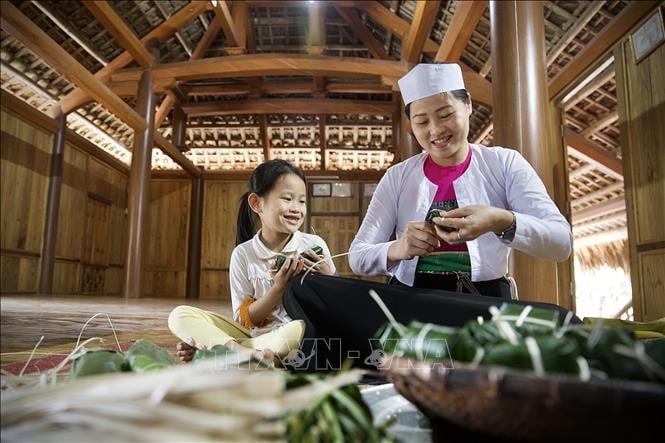
The customs of celebrating the New Year among the Muong people have changed considerably. Many families in the four Muong regions of Hoa Binh province now celebrate the Kitchen God Festival, buying fish to release into the water on the 23rd day of the 12th lunar month. Ancestor worship rituals during the New Year have become simpler and less common. Traditional folk games are still held during the Tet holiday, and modern games from other regions have been added to cater to the tourism needs of both domestic and international visitors.
With the passage of time and the development of the market economy , the Muong ethnic identity and the "Hoa Binh Culture" are gradually fading; preserving, protecting, and promoting the cultural values of the Muong people is an urgent requirement. Hoa Binh province has been making efforts to preserve and promote the intangible and tangible cultural values of the Muong people and the "Hoa Binh Culture" in the area.
On November 24, 2023, Hoa Binh province issued the Project on Preserving and Promoting the Cultural Values of the Muong Ethnic Group and the "Hoa Binh Culture" for the period 2023-2030 to continue researching, preserving, and promoting the cultural heritage and fine traditions of the Muong people; contributing to promoting and introducing the land and people of Hoa Binh, building unique tourism products to attract domestic and international tourists, and promoting the socio-economic development of the province. Mr. Luu Huy Linh, Deputy Director of the Department of Culture, Sports and Tourism of Hoa Binh province, said that the custom of celebrating the New Year of the Muong people is a beautiful tradition, containing many historical and cultural values from ancient times, preserved and passed down through generations by the Muong people of Hoa Binh. With the rapid development of information technology, infrastructure, and transportation, making travel between regions easier, preserving the cultural values of the Muong people in Hoa Binh during the Lunar New Year is becoming an urgent matter, requiring the coordinated efforts of the entire provincial government system.
During his recent working visit to Hoa Binh province, the Head of the Central Propaganda Department, Nguyen Trong Nghia, emphasized that Hoa Binh needs to proactively and actively integrate internationally in culture, strengthen the development of cultural diplomacy; and continue to promote the value of two major cultural heritages, Mo Muong and the "Hoa Binh Culture," to research, prepare dossiers, and submit them to UNESCO for inscription on the World Cultural Heritage List. The task of preserving and promoting the cultural values of ethnic groups, both tangible and intangible, plays a crucial role in building and developing culture and people, meeting the requirements of rapid and sustainable development. This is a task that is both urgent and strategic, with long-term implications.
TH (according to the News newspaper)Source






![[Image] Central Party Office summarizes work in 2025](/_next/image?url=https%3A%2F%2Fvphoto.vietnam.vn%2Fthumb%2F1200x675%2Fvietnam%2Fresource%2FIMAGE%2F2025%2F12%2F18%2F1766065572073_vptw-hoi-nghi-tong-ket-89-1204-jpg.webp&w=3840&q=75)

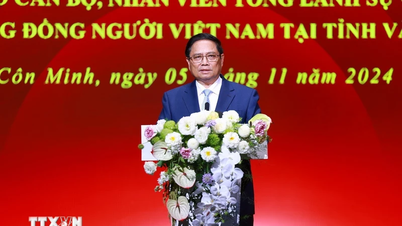


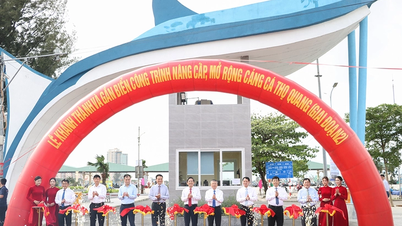







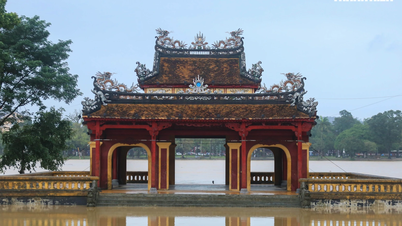



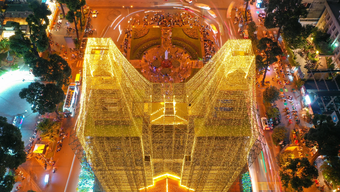
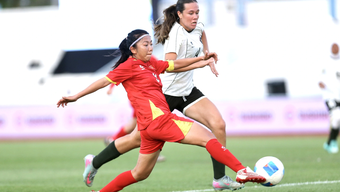



























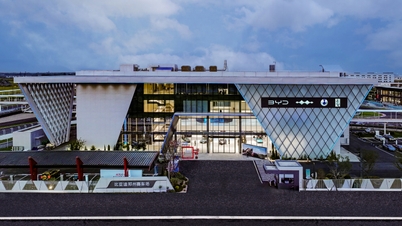







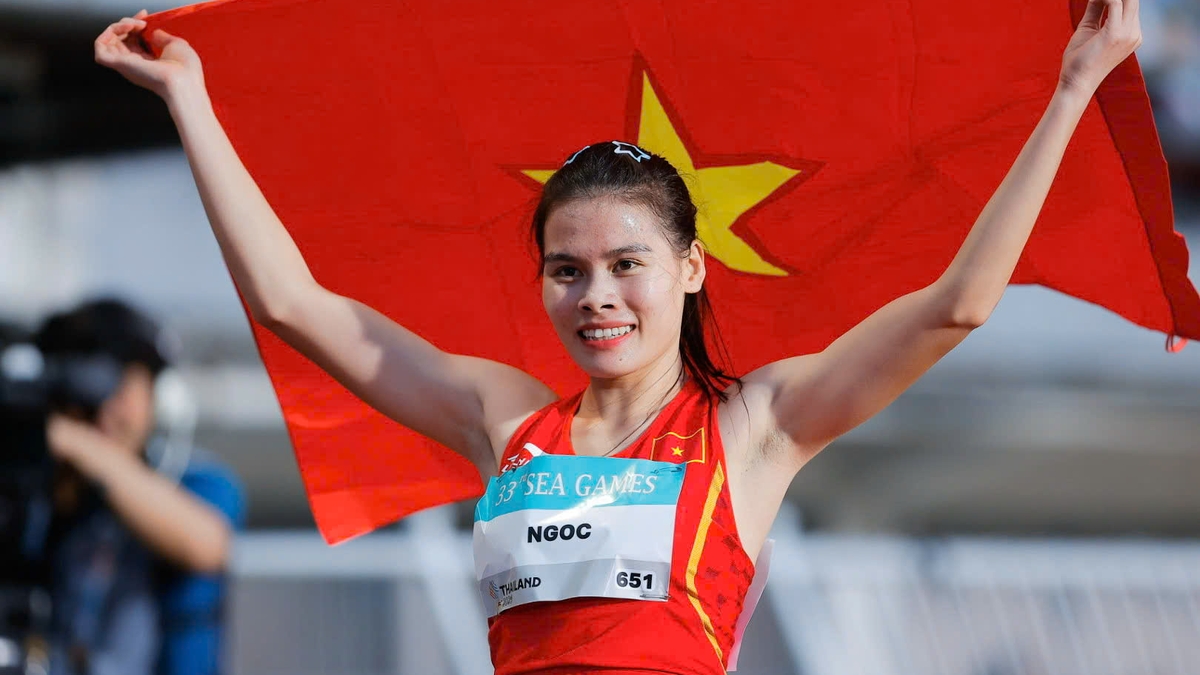






























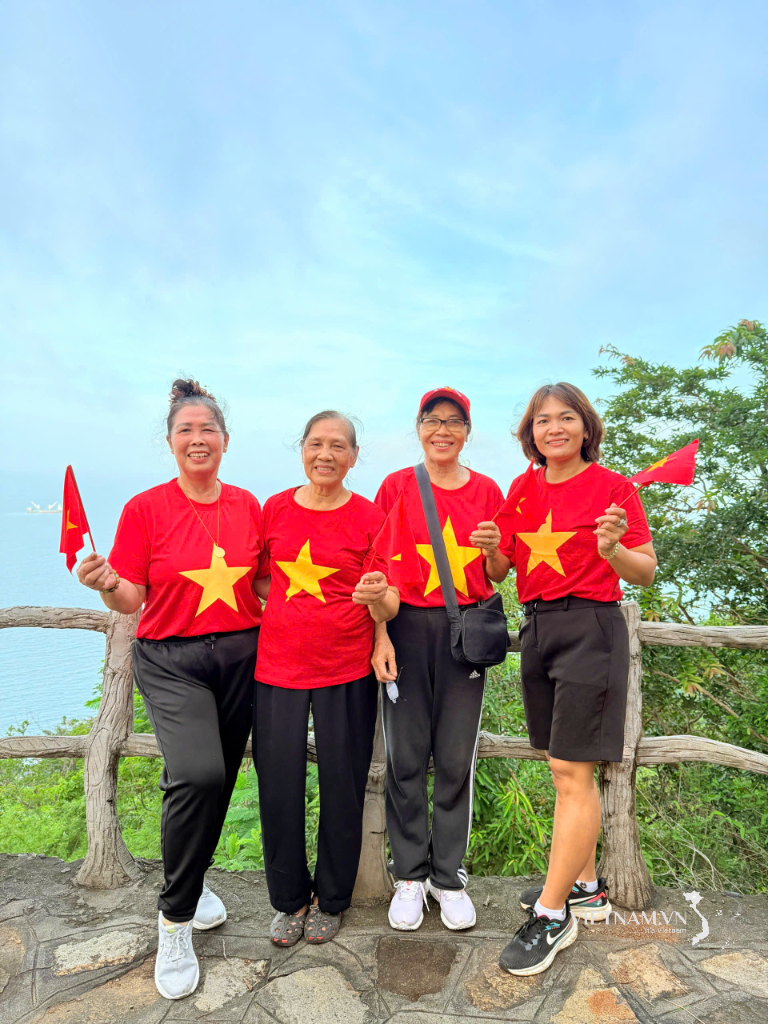


Comment (0)